- Home
- Thomas Keneally
A Commonwealth of Thieves Page 12
A Commonwealth of Thieves Read online
Page 12
Notable amongst the other marrying couples was the young Norwich Castle pair whose destiny had so affected the English public: Henry Kable and Susannah Holmes. This union, between two marginal people in a place forgotten by God, would prove abiding, and end only with Susannah's death as a matriarch nearly forty years later. It was the sort of alliance both Johnson and Phillip required—marriage as a moral rudder. It is in a sense a pity they were not the first order of business that day, for they would have brought great honour to the role of Antipodean Adam and Eve.
The last couple to bespeak Parson Johnson that day were as exceptional as the Kables. They already had a child between them. Or at least Mary Braund or Broad, a handsome Cornish girl in her early twenties, had given birth to a daughter whom she named Charlotte, the same name as the transport she and her new husband, Will Bryant, travelled on, and it was presumed Charlotte was Will's child. Mary had been guilty, along with two other girls, of ambushing a Plymouth spinster and robbing her of a silk bonnet and goods to the value of 11 pounds 11 shillings. As they stood before the Exeter assizes on 20 March 1786, all three girls were sentenced to hang. Their sentences were reduced to seven years transportation.
On the Dunkirk hulk, Mary had met Will Bryant, a Cornish fisherman about twenty-seven years of age, convicted exactly two years earlier than Mary at the Launceston assizes for “resisting the revenue officers who attempted to seize some smuggled property he had.” He was sentenced to seven years transportation as well, so that he had served over four years in the Dunkirk at the time he was put aboard the convict transport Charlotte. Smuggling, Will's crime, was considered almost respectable, particularly in Cornwall. Anyone who had anything to do with the sea was involved in illegal import. Fishermen downloaded tax-free wine, brandy, and tea from French ships, or from British ones nearing port whose captains wanted to avoid paying tax, and brought the goods ashore, where the distribution networks ran deep inland. In eastern counties like Sussex, smuggling wool out of England without paying tax on it was a common seafaring activity, and bitterness over the excise men, the customs police, would come close to causing civil rebellion. As one eighteenth-century observer wrote, there arose “an organised resistance to the government, in which towns were besieged, battles fought, customs houses burned down, and the greatest atrocities committed.” It was not considered a grave sin to kill “these cruel narks” who wanted to impose their excise on the supply of goods from France.
The Bryant who married on 10 February in Sydney Cove was the sort of man in whom a native independence and a dark sense of having been used hard were at work. They created in him a determination to return to the known world, and he was very frank, even with Mary, that he did not see a New South Wales marriage as binding should he escape. Yet, uttering her vows before Johnson on the strange southern shore, Mary would come to pay such a phenomenal price of loyalty to her spouse as would make the normal respectable marriage of better folk in other places look pallid indeed.
By the time he took his marriage vows, Will had been appointed the colony's fisherman with special privileges of residency on the east side of the cove, and the management of other convicts assigned to the government fishing boats. Of necessity, Phillip blessed him for his skills.
THERE WAS A RULE by mid-February that sailors were not to be admitted to the women's camp. The male convicts, however, were happy as soon as the women were landed to see it enforced against those sailors who had lorded over them at sea. The day after the weddings, a carpenter and a boy belonging to the Prince of Wales were caught in the women's tents. They were drummed out with a marine fifer and drummer playing the “Rogue's March” and the boy dressed in petticoats. Similarly, it was proving difficult to keep the male convicts out. Surgeon Bowes Smyth wrote, “The anarchy and confusion which prevails throughout the camp and the audacity of the convicts, both men and women, is arrived to such a pitch as is not to be equal, I believe, by any set of villains in any other spot upon the globe.”
Yet there was purer, more admirable and singular love. A sailor named John Fisher, from the Lady Penrhyn, gave way to his longing to see his convict woman, Catherine Hart, and their infant son, John. Catherine Hart had been nineteen when tried at the Old Bailey in 1784 for some undistinguished act of theft. The prosecutor addressed the judge in these terms about the goods she had stolen: “My Lord, I value them at thirty shillings in order to save her life, because the wretch's life is no value to me.” The child, John, had been one of the children baptised at the Cape of Good Hope, and now his father, the seaman Fisher, swam ashore a number of nights to see his mother and him. He would sicken and die at Sydney Cove on 25 March 1788 of chest infection and dysentery, Surgeon Bowes Smyth attributing his death to his “imprudence” in swimming ashore naked. “He would lie about with her in the woods all night in the dews and return on board again a little before daylight, thereby he caught a most violent cold and made his disorder infinitely more putrid than it would otherwise have been.”
The women of Sydney Cove would often be as practical about marriage as Phillip was. For after John Fisher died, Catherine became the lover of Lieutenant Robert Kellow, who would leave her with two of his children when he left the colony.
AT JUDGE-ADVOCATE DAVID COLLINS'S judicial marquee, on a warm hour in mid-afternoon, the first criminal court of three naval officers and three military officers, dressed in their uniforms and carrying side-arms, assembled on the day after the weddings to address the emergence of criminal unruliness in New South Wales. Harry Brewer in his raggedy naval jacket was put to work to bring along the first three accused of crimes in Sydney Cove. They were not very remarkable crimes. An angry young West Country thief, Sam Barsby, had been working at making barrel staves on the east side of the stream and had broken his adze. Unable to find a new adze at the store tent, and fired by rum sailors had given him in return for pointing out the women's camp to them, he was ordered back to work by Drum-Major Benjamin Cook. Barsby struck the drum-major with the broken adze and a melee began which ended with the soldiers guarding Phillip's canvas Government House taking Barsby prisoner. During the evening of his arrest, Barsby raged in his bonds and was ultimately gagged. He was found guilty and sentenced to 150 lashes, harsh enough but less than Private Bramwell got for assaulting a convict woman.
By the time of this first criminal trial, Albion/Sydney had established itself as the southern hemisphere's London, since the same dodges, lurks, and ruses characterised both places. Similar too was the justice system, which proceeded functionally to administer the punishment to Barsby as soon as the court had finished sitting. As with Bramwell, he was tied to an iron triangular frame and the lashes counted out.
The former revolutionary soldier Jacob Nagle observed that the cato' nine-tails was feared until its first use, after which a deterioration could be observed in the sailor's or convict's character. For those who had not been flogged with a cat—its multiple knotted ends each encasing a lump of lead—flogging was unimaginable; in their profoundest soul, they hoped it would not happen to them. For men who did not consider themselves professional criminals—Will Bryant, the smuggler, for example—the triangle was an entry to a new, angry world in which they would have less power over their own souls and over the furies of their temperament, and thus over the progress of their imprisonment.
But those to whom it was happening a second or third time often “endured it in a solemn silence, no cry, no groan, no prayer for mercy.” Only an occasional threat came from the prisoner: “But damn my eyes if I don't have satisfaction one way or another, if I get hanged for it.”
The second person to be tried that afternoon was Thomas Hill, who had forcibly taken a quantity of bread from a weaker convict. It must have been a mere morsel for him to have been saved the gallows, but the crime suggests that for some in Sydney Cove hunger was already biting, not least because it was almost impossible for Phillip to prevent the convicts trading or gambling their rations, and being left voracious for days. Hill was sen
tenced to be kept in irons for one week, fed on bread and water, on the little sandstone knob of an island off the eastern end of Sydney Cove. A breeches-maker from Dorset who had as his founding criminal offence stolen a silver watch, Hill became the first man to occupy that rock which would acquire the name Pinchgut.
To round out the early cycle of punishments, and to show that New South Wales was of full British weight, on 14 February two women received twenty-five lashes each “at the cart's tail”—tethered to a cart as it moved around the camp—for theft. Private Easty mentioned an event so remarkable to modern sensibilities quite offhandedly in his journal.
ten
AS SOON AS THE BRITISH ships left Botany Bay, the French built on its north side a palisade fortification to enable new boats or longboats to be constructed in safety. “This precaution was necessary,” wrote La Pérouse, “against the Indians of New Holland, who though very weak and few in number, like all savages are extremely mischievous … for they even threw darts at us immediately after receiving our presents and our caresses.” Expecting conflict, La Pérouse was not disappointed. In an ill-defined event on the shores of Gamay, Botany Bay, a number of Cadigal (Sydney), Bediagal (north shore Botany Bay), and Gweagal (south shore Botany Bay) natives were shot and wounded.” Though this brought a general deterioration in the relationship between the natives and all Europeans, wrote Collins, “We were however firstly convinced that nothing short of the greatest necessity could have induced M. de La Pérouse to take such a step.”
The new people in Warrane, Sydney Cove, seemed to require no fortification, however, nor was the judicious Phillip tempted to erect any. Some wisdom told him that a new society could not be created from within a state of siege. Not that the people in Sydney Cove had been pestered by natives, who stayed away from the area in the early weeks. But on the second Saturday of February, two natives came down to within a small distance of the governor's canvas house. They were “both men pretty much advanced in life” and bore long spears. The governor, determined to be courteous, put on his coat and went out to meet them with a number of officers, and gave one of them a hatchet “and bound some red bunting about their heads with some yellow tinfoil.” The two visitors sat beneath a tree but refused to go any further into the new town. One of them spent the time sharpening the point of his spear with an oyster shell, perhaps in the hope of showing the force he had to hand and thus moderating the behaviour of the newcomers.
When an African boy from one of the ships came up to look at these elders, they opened his shirt and examined his chest, then felt his hair, and by signs begged for a lock of it. Surgeon Bowes Smyth cut off a tress. They put the boy's hair aside in a wreath of grass, and were quite willing to let Bowes Smyth take some of their own. Perhaps they intended to work some ritual of expulsion by using the boy's hair. Perhaps they thought he was one of them, lost.
Whatever their purpose, one could be sure it was unlikely to be idle, and worthy of a better response than bunting and tinfoil. In fact Phillip would soon hear rumours that some of his people had been involved in the rape and plunder of natives, and ultimately of murder, though there was no direct evidence of any of this. Almost certainly the two elders had come, amongst other motives, to observe the people who were so casual in violating the world set up by the hero ancestors, the beings who created the local environment of each clan and language group in the great period of generation known as the Dreaming.
For the individual native, the knowledge, ritual, and mystery attached to maintaining the local earth were enlarged at initiation, and further secrets were acquired through a lifetime, sometimes by means of dreams, sometimes by shared ceremonial. Natives at particular ceremonial sites reenacted the journey and acts of creation of a particular hero ancestor, and by doing that they sustained the earth. As in other places the priest became Christ at the climax of the liturgy, during their reenactment they became the hero ancestor. A network of dreaming tracks existed, criss-crossing the continent and the Sydney basin, connecting one well of water or place of nourishment or shelter with another. The eastern coastline of New South Wales, built up of Hawkesbury sandstone, standing above the sea in great platforms and easily eroded to make caves, was full of such holy sites. All around Port Jackson there existed a huge number of pecked and abraded engravings of humans, ancestors, sharks, and kangaroos on open and sheltered rock surfaces.
As part of what he brought to these contacts, Phillip had the helpful term ab origine to apply to the local people—these humans had been here from the beginning. There were as yet few European challenges to the accepted biblical age of the earth—six or seven thousand years. So though Phillip knew that his convict camp sat cheek by jowl with an ancient people, he did not know how antique was their occupation of the land he had claimed for George III. Indeed, the true chronology would not be known until modern times, and it serves as context to all that went on between the two races.
In what is now western New South Wales, near Lake Nitchie, some 6,800 years ago, a number of men very much resembling these two elders, and members of the species Homo sapiens, worked for the better part of a week cutting a pit into hard sediments and making it large enough to take the body of an important man. He was a tall man at 182 centimetres. He had died in his late thirties from a dental abscess. In 1969 the body was found, still seated after millennia, legs bent and head and shoulders forced down to fit him into the grave pit and bury him before he putrefied. He was daubed with red ochre, and interred with solemn ornamentation: scraps of pearl shell which had somehow reached this distant inland location, a lump of fused silica from a meteor, and a necklace of 178 Tasmanian devil's teeth. (The Tasmanian devil became extinct in mainland Australia nearly 7,000 years ago.) This man was a figure of significance and power—his necklace and the care taken to inter him showed that. And although in some cultural aspects of his life he would have differed from these two elders who visited Phillip in February 1788, and although they spoke a different language from that spoken by the ancient tall man, the essentials of his life—ceremonial, hunting, and social—would have been totally understandable to them. Whereas to Phillip they were, and would be despite his best intentions, an utter puzzle.
Not that the man of Lake Nitchie is the oldest of rediscovered burials in Australia. A female cremation-burial that occurred 26,000 years ago has been uncovered at Lake Mungo in western New South Wales. The light-boned woman's body was not totally consumed by flames when it was cremated on the beach of Lake Mungo, and the remaining bones were broken up and placed in a pit. Half a kilometre distant, but some 2,000 years earlier, another body, almost certainly a woman's, her right shoulder badly afflicted with osteoarthritis, had been buried, ornamented with red ochre. Both these women were Homo sapiens and it is likely that their cosmology too coincided in essentials with that of the elders who came to visit Sydney Town.
OTHER CONTACTS MADE EARLY in that remarkable month of February confirmed the idea that the natives were interested in the new people but distressed by their unauthorised taking of fish and game. A pernicious trade in native souvenirs had also started between the convicts on land, and even some of the marines, and the sailors of the transports. The sailors knew they would soon be departing and were willing to buy stolen spears, throwing sticks, and native nets as mementos. The fishing lines used by the native women were difficult for them to replace, being arduously spun from the inner bark of the kurrajong tree. Women would roll long strips of the bark on the inside of their thighs, twisting it together to make the lines. They used the sap of the red bloodwood tree to prevent the line from fraying. They also used bark fibre to make fishing nets, carrahjun maugromaa, and net bags, which they hung from their necks or foreheads and used to carry their fishing lines and other possessions..
Burra, fishhooks, made either of hardwood or of the spiral vortex of shells, were also stolen. The Eora forebears had fished with hooks and handlines and the multipoint spears the Europeans called fizgigs—from the Spanish fi
sga, harpoon—for at least two millennia. The men used canoes chiefly to cross from one bay to another, but always fished in the shallows. One European declared that he had seen a native catch more than twenty fish in an afternoon by standing up in the canoe and striking at fish with his fizgig made of the flowering stem of the grass tree, or of wattle acacia, its four barbs fastened in place by gum. The wooden prongs were honed in the fire and headed with animal-bone points, sharp fish-bones or teeth, or viciously cutting stingray spurs..
Collins said that at convict musters and morning military parades, soldiers and convicts had been warned against depriving the natives of their spears, adhesive yellow gum, or other articles. But there were obvious violations, and the bad conduct of a particular boat crew led to a landing party in one of the coves in the lower part of the harbour being driven off with spears.
Tit-for-tat, a game the natives played with the same vigour as the Europeans, was now established. A party of Aboriginal men, perhaps sixteen or eighteen, landed on the Garden Island of the Sirius and carried off a shovel, spade, and pick-axe. One of the sailors there picked up a musket and got a shot away. A wounded native dropped the pick-axe. Was the attempt to take this item straight theft, was it the unknowing and accustomed picking up of whatever lay in nature, or was it an attempt at an adjustment of the books? It was, in any case, interpreted on the newcomers' side only as predictable native thievery. Captain Collins lamented, “To such circumstances as these must be attributed the termination of that good understanding that had hitherto subsisted between us and them, and which Governor Phillip laboured to improve wherever he had the opportunity.” Collins was fair enough to acknowledge that the loss of their fishing lines and other implements must have created “many inconveniences” for the Eora..

 Confederates
Confederates Flying Hero Class
Flying Hero Class Gossip From the Forest
Gossip From the Forest Schindler's List
Schindler's List Bring Larks and Heroes
Bring Larks and Heroes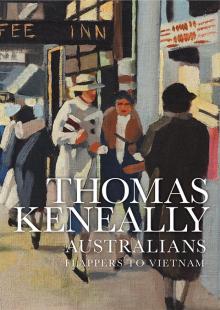 Australians: Flappers to Vietnam
Australians: Flappers to Vietnam The People's Train
The People's Train Crimes of the Father
Crimes of the Father A Family Madness
A Family Madness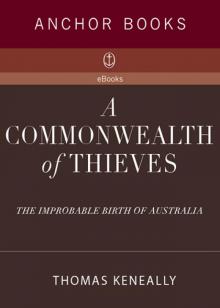 A Commonwealth of Thieves
A Commonwealth of Thieves Ned Kelly and the City of Bees
Ned Kelly and the City of Bees A River Town
A River Town Bettany's Book
Bettany's Book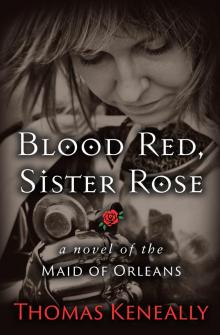 Blood Red, Sister Rose: A Novel of the Maid of Orleans
Blood Red, Sister Rose: A Novel of the Maid of Orleans Victim of the Aurora
Victim of the Aurora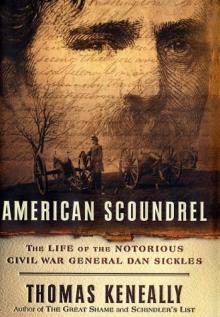 American Scoundrel American Scoundrel American Scoundrel
American Scoundrel American Scoundrel American Scoundrel Three Cheers for the Paraclete
Three Cheers for the Paraclete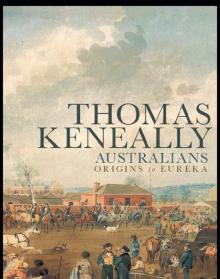 Australians: Origins to Eureka: 1
Australians: Origins to Eureka: 1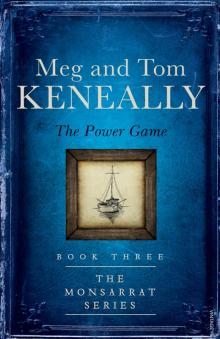 The Power Game
The Power Game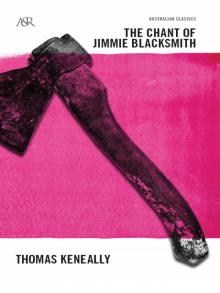 The Chant Of Jimmie Blacksmith
The Chant Of Jimmie Blacksmith The Daughters of Mars
The Daughters of Mars Searching for Schindler
Searching for Schindler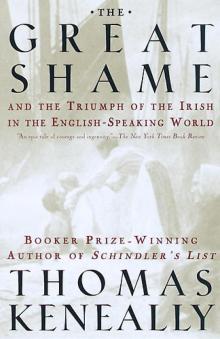 The Great Shame: And the Triumph of the Irish in the English-Speaking World
The Great Shame: And the Triumph of the Irish in the English-Speaking World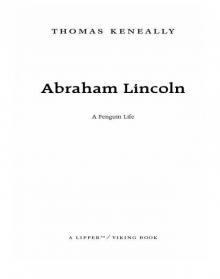 Abraham Lincoln
Abraham Lincoln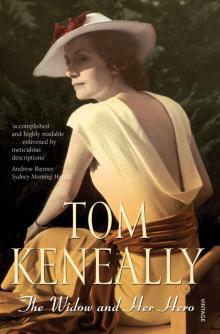 The Widow and Her Hero
The Widow and Her Hero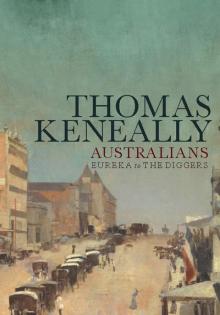 Eureka to the Diggers
Eureka to the Diggers Shame and the Captives
Shame and the Captives The Survivor
The Survivor Jacko: The Great Intruder
Jacko: The Great Intruder The Book of Science and Antiquities
The Book of Science and Antiquities Homebush Boy
Homebush Boy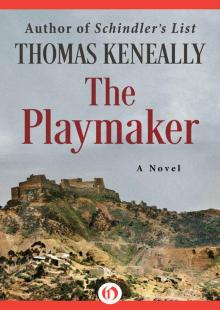 The Playmaker
The Playmaker To Asmara: A Novel of Africa
To Asmara: A Novel of Africa A Woman of the Inner Sea
A Woman of the Inner Sea The Tyrant's Novel
The Tyrant's Novel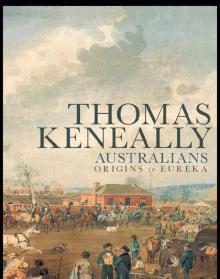 Australians
Australians Schindler's Ark
Schindler's Ark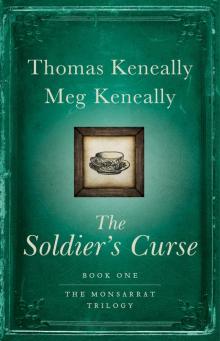 The Soldier's Curse
The Soldier's Curse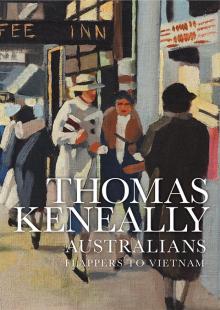 Australians, Volume 3
Australians, Volume 3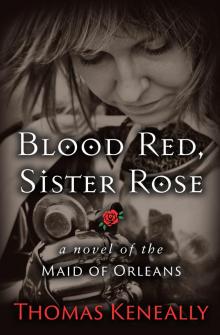 Blood Red, Sister Rose
Blood Red, Sister Rose A Victim of the Aurora
A Victim of the Aurora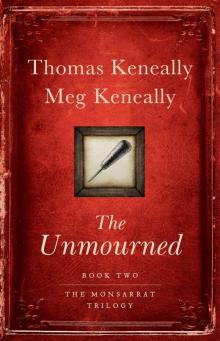 The Unmourned
The Unmourned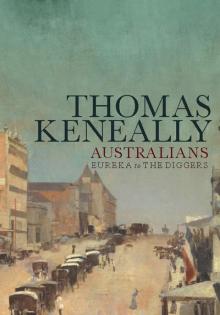 Australians, Volume 2
Australians, Volume 2 To Asmara
To Asmara